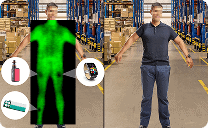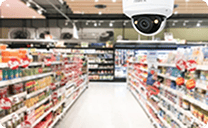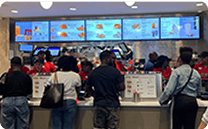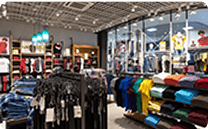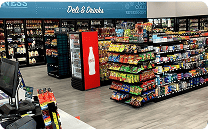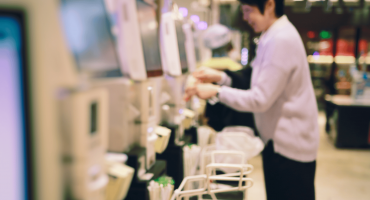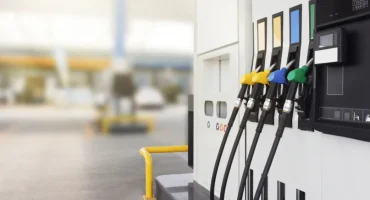In This article
Every retail environment must include adequate protections for customers, employees, and assets. A secure store fosters trust and positive customer and employee perceptions and enhances operational efficiency. This post highlights the importance of effective retail safety solutions and describes their key components: well-defined retail safety policies, robust store security systems, and consistent compliance with proven best practices.
Why Retail Safety Matters
Your retail environment must be safe and secure enough to protect your customers, staff, and critical business assets. Making safety a top priority in your retail settings delivers multiple significant benefits.
- Customer Trust: Shoppers are more likely to frequent and recommend stores where they feel secure, feelings that can translate into increased loyalty and sales.
- Employee Well-being: A safe workplace boosts staff morale, enhances productivity, and reduces turnover.
- Operational Continuity: Effective, well-implemented retail safety solutions can reduce and prevent accidents, theft, and other incidents that can disrupt operations and lead to legal liabilities.
Essential Retail Safety Policies
Clear, effective, well-documented, and well-enforced retail safety policies maximize the value of every security investment and initiative you pursue. Policies that address these four areas will provide a firm foundation for your safety efforts and other business pursuits.
- Emergency Protocols: Develop clear, step-by-step procedures for handling various emergencies, including fires, medical incidents, and security threats. Address any location-specific threats, such as earthquakes, floods, hurricanes, or prolonged periods of extreme heat or cold. Make these policies mandatory for employee onboarding.
- Staff Training and Engagement: Conduct regular training sessions on safety protocols, proper equipment usage, and emergency responses. This will help keep your staff’s knowledge of your safety policies, processes, and solutions up to date and help them handle situations confidently, consistently, and effectively.
- Customer Safety Measures: Adequate lighting, clean, obstacle-free aisles, and clear signage all help to guide customers safely and prevent accidents. Ensure that policies and procedures for taking these and related measures are understood and followed.
- Regulatory Compliance: Comply with all relevant rules and standards from the Occupational Safety and Health Administration (OSHA) standards and state and local regulators. Stay informed and up-to-date on these to promote safety and avoid potential legal repercussions and reputational risks.
Store Security Systems and Their Role in Retail Safety
Modern technologies have transformed the way many consumers engage with retailers. Modern store security systems and retail safety solutions play similarly pivotal roles in deterring theft and ensuring safety in retail environments.
- Surveillance Cameras (CCTV): High-definition cameras provide real-time monitoring and voluminous, searchable recording and storage features. They can be very valuable as deterrents to unsafe or criminal acts and sources of investigative data.
- Alarm Systems: Intrusion alarms can alert staff, management, third-party monitoring companies, or law enforcement to unauthorized access or activity. Smart, well-configured alarm systems can enable swift responses to potential threats.
- Access Control: Measures restricting access to confidential information, sensitive areas, and valuable assets can help make your company and customers safer and more secure. Pay particular attention to opportunities to protect customers’ personal information, such as payment accounts or Social Security numbers.
You can and should integrate these systems and solutions as much as possible. This will help you create a comprehensive network that embraces your store, staff, and customers with greater safety and security.
Safety Equipment for Retail: The Frontline of Protection
No amount of prevention or deterrence can guarantee that your retail environment will never experience a safety-related incident. However, the right equipment can help ensure that your staff and store can effectively handle such occurrences with minimal disruption or customer upset.
- Fire Extinguishers: You must strategically place and regularly maintain enough extinguishers to promptly address and contain fire incidents, wherever they might occur in your environment.
- First Aid Kits: Accessible kits enable staff to respond immediately to many medical emergencies, mitigating their duration and severity. Your staff must be trained to use the kits and recognize when and how to safely escalate beyond first aid and comply with relevant regulations.
- Panic Alarms: Your staff needs discreet, effective ways to summon management and additional assistance during emergencies. The ability to do so can enhance personal safety and minimize panic and confusion.
These and other safety and security solutions must be inspected regularly and recharged, refilled, or replaced as needed for maximum effectiveness and value. Staff training must also be kept up to date, especially as you update or replace any of your chosen solutions.
Importance of Safety Signage in Stores
Clear, engaging signage can make your retail environment significantly safer. Proper signage placement and regular maintenance ensure visibility and compliance with safety standards.
- Hazard Warnings: Signs that alert customers and staff to potential dangers, such as wet floors or restricted areas, can help prevent accidents.
- Emergency Exits: Clearly marked exit routes and guide points facilitate quick evacuations during emergencies.
- Informational Signs: Signs and displays informing customers about store policies, restroom locations, or customer service options can enhance customer safety and the shopping experience.
Integrating Advanced Retail Safety Solutions
Multiple advanced technologies are contributing to the evolution of safety solutions for retail. Here are three high-profile examples.
- Artificial Intelligence (AI): AI-powered intelligent video surveillance systems can detect and assess suspicious actors and behaviors, alerting staff to potential threats in real time.
- Cloud Storage: Video footage is only helpful if it is accessible when needed. Protecting yourself from fraudulent complaints, theft, and fraud can be challenging without evidence. With off-site cloud storage, the footage can be easily accessed, resulting in significant time and cost savings.
- Internet of Things (IoT): Connected devices monitor store conditions, such as temperature or air quality, and locations of specific people or assets, such as company vehicles. Access to IoT data can help make your environment safer and more resilient in response to threats or unexpected events.
- Predictive Analytics: Comprehensive analysis of safety and security data can help you identify patterns and trends and address potential safety issues before they become actual incidents or threats.
Solutions powered by these technologies can help you enhance your incident prevention and response strategies and take a more proactive approach to retail safety.
Best Practices for Implementation
Retail store safety is never “one and done.” Here are three things you must do to sustain the success of your safety and security efforts.
- Conduct Regular Audits: Periodically assess safety policies, protocols, solutions, and systems to identify and rectify vulnerabilities.
- Engage Employees: Encourage staff to adopt a “safety first” attitude and reward those who contribute valuable ideas or provide noteworthy assistance to a customer. Foster a culture where staff are encouraged to report hazards and suggest improvements.
- Stay Updated: Continuously monitor and incorporate advancements in safety technology and practices to keep your efforts current.
Conclusion
A comprehensive approach to retail safety involves integrating well-defined policies, advanced security systems, essential safety equipment, clear signage, and supporting processes to ensure a secure environment. Building your retail safety strategy on this foundation, embracing modern technologies, and fostering a “safety first” culture can protect your business, enhance customer comfort and trust, and ensure a safe and secure environment for all. Learn more about DTiQ’s safety and risk management solutions on our website.
